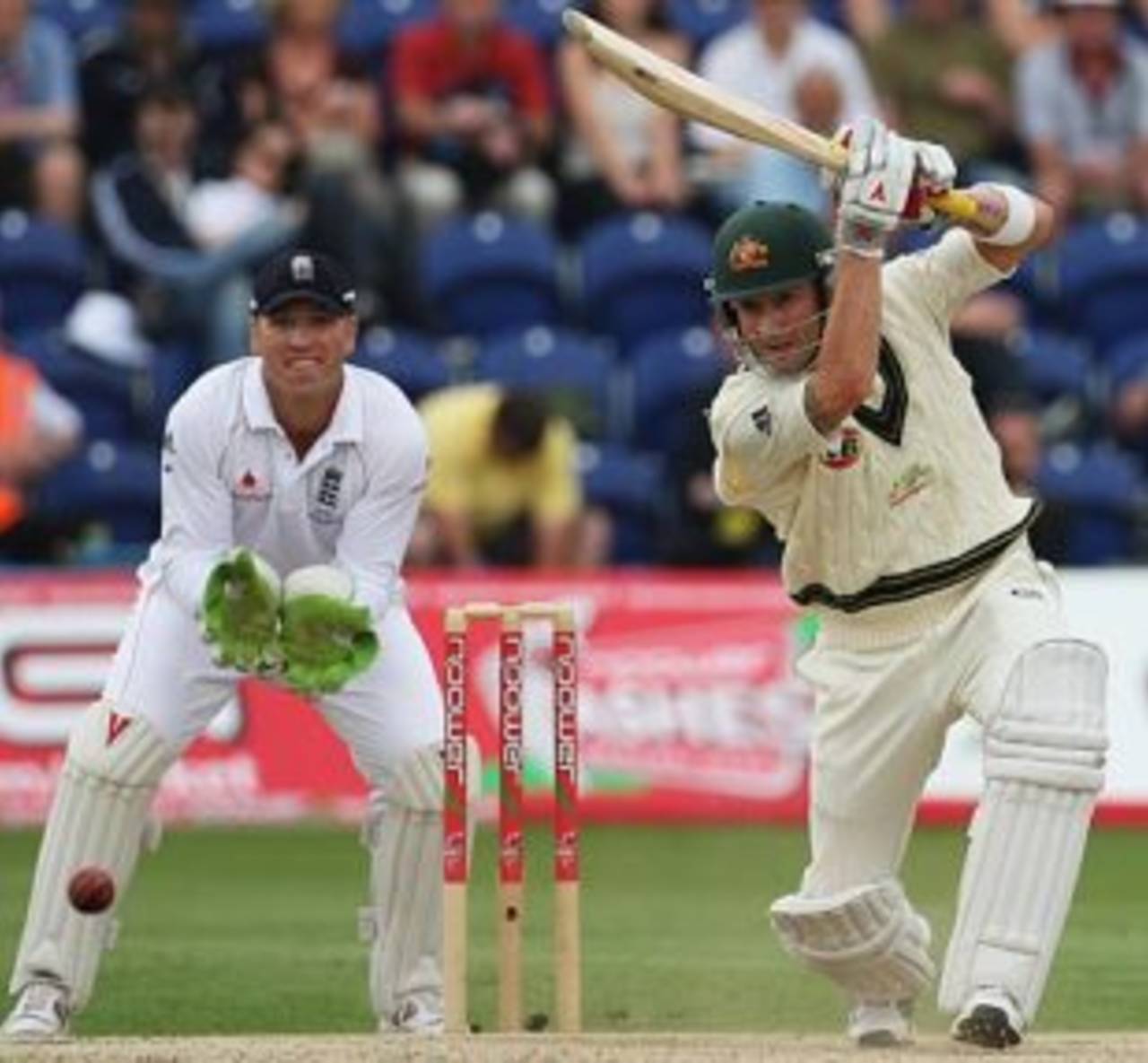In two of the three Test matches that were played out this week, teams ended up staring at fourth-innings targets that had never before been achieved in Test history. Australia made a
brave fist of it, becoming the first team to score more than 400 in the last innings of a Lord's Test, while Sri Lanka made an excellent start too, against a daunting target of 492. In the third of those Tests, the target and the bowling attack were a lot easier, but Bangladesh's effort in chasing down 215 was still highly creditable, given the enormity of the occasion before a team that had never won a series overseas.
All three games further reinforced the theory that batting last is becoming easier in Test cricket - the pitches stay true but lose some of their bite from the previous days, the bowlers are perhaps less venomous after their first-innings exertions, while the batsmen don't seem daunted by stiff targets.
A decade-wise look at fourth-innings numbers reveals exactly this: through most of the 1990s, batting last remained an arduous task, but the balance began to gradually shift in favour of the batsmen in the 2000s, with the average runs per wicket going up to 30.85 in 2001, and to 35.53 in 2003. Overall, batsmen have averaged 31.55 runs per wicket in the fourth innings in the 2000s (includes stats till the end of the fourth day of the Sri Lanka-Pakistan Test at the SSC), which is a considerable increase from the average of 27.75 in the 1990s. There have been
34 totals of 300 or more in the fourth innings in this decade, which is twice as many as were achieved in the 1990s. This is also the first decade to record a half-century of centuries in the fourth innings - Michael Clarke's classy 136 was the
50th hundred in the last innings since 2000.
In the last four years, especially, the numbers have been consistently impressive, with the average going up to more than 36 runs per wicket in 2007 and in 2008.
Sixteen out of 34 totals of 300-plus during this decade have come since 2007, which is a further indication of the balance shifting in favour of batsmen in the last few years.
The year 2008 was especially memorable, with nine scores in excess of 300 - South Africa's remarkable 414 for 4 against Australia in Perth came within a week of India's splendid 387 for 4 against England in Chennai, while New Zealand (431 against England in Napier), Bangladesh (413 against Sri Lanka in Dhaka) and West Indies (387 against Australia in Barbados) all had their fourth-innings moments.
So which venues support the efforts of fourth-innings batsmen more than others? Taking the cut-off as 1980, with a qualification of at least 10 Tests that had a fourth innings as the qualification,
Old Trafford comes out with the best record for batsmen. On the 100 occasions that batsmen have played there in the last innings, they've averaged 36.84 runs per dismissal (includes bat runs only), with eight centuries. The last three innings there have all seen batsmen do pretty well - Australia scored 371 for 9 to draw a tense game in 2005, West Indies
made 394, which was the highest score of all four innings of the match in 2007, while England easily chased down 294, losing only four wickets, against New Zealand in 2008. In fact, Old Trafford has been at its best for batting in the fourth innings, with an average of 40.16 (includes runs off extras) during this period; in the first three innings, the corresponding numbers are 34.84, 32.74 and 36.81.
Lahore, Wellington and Cape Town follow closely, with fourth-innings averages in excess of 35. At all these venues there isn't much difference between the average runs scored in the first innings and the runs made in the fourth, which indicates the pitches there generally remain pretty good throughout the match.
At the other end of the spectrum is the
Wankhede Stadium in Mumbai, which is, going by these numbers at least, an absolute nightmare for batting in the last innings. The average bat runs scored per wicket here in last innings of Tests since 1980 is a dismal 17.68. In the last two fourth innings here, Australia scored 93 - in that
infamous Test in 2004 - and India were
bundled out for 100 by England in 2006. Other low scores include England's 102 in 1981 and India's 145 against New Zealand in 1988. South Africa were creditable winners here, chasing a tricky target of 163 losing six wickets in 2000. Of the 89 times that batsmen have come out to bat here, only twice have they returned with a 50-plus score against their names. Both those knocks came in the same match, in West Indies'
96-run loss in 1994, when Jimmy Adams scored 81 and Junior Murray 85.
The Iqbal Stadium in Faisalabad is next on the list, and while batsmen have managed 13 half-centuries in fourth innings here since 1980, no one has gone on to a hundred, with Zahid Fazal's 78 against Sri Lanka in 1992 being the highest there. Low totals here include Pakistan's 53 against West Indies in 1986, and their 92 against South Africa in 1997.
All stats till the end of the fourth day's play of the ongoing SSC Test.
